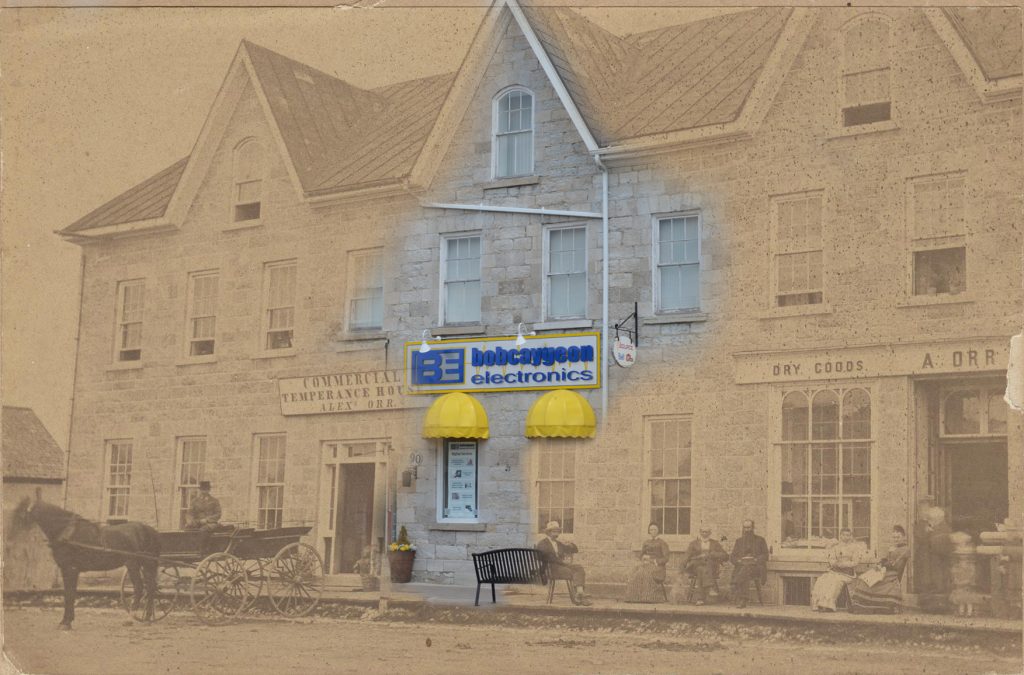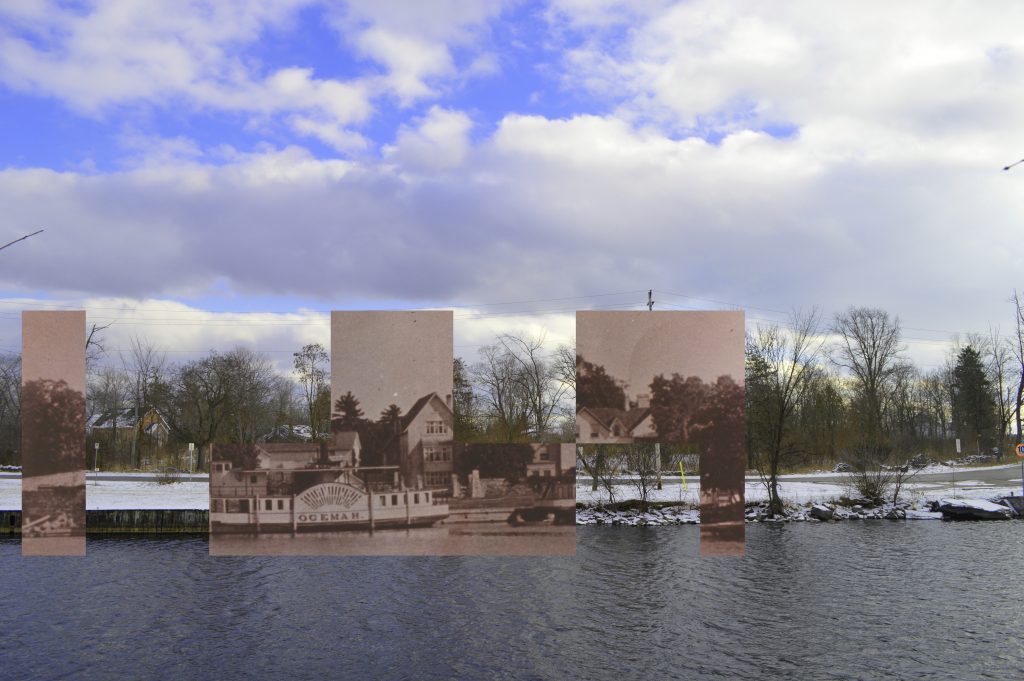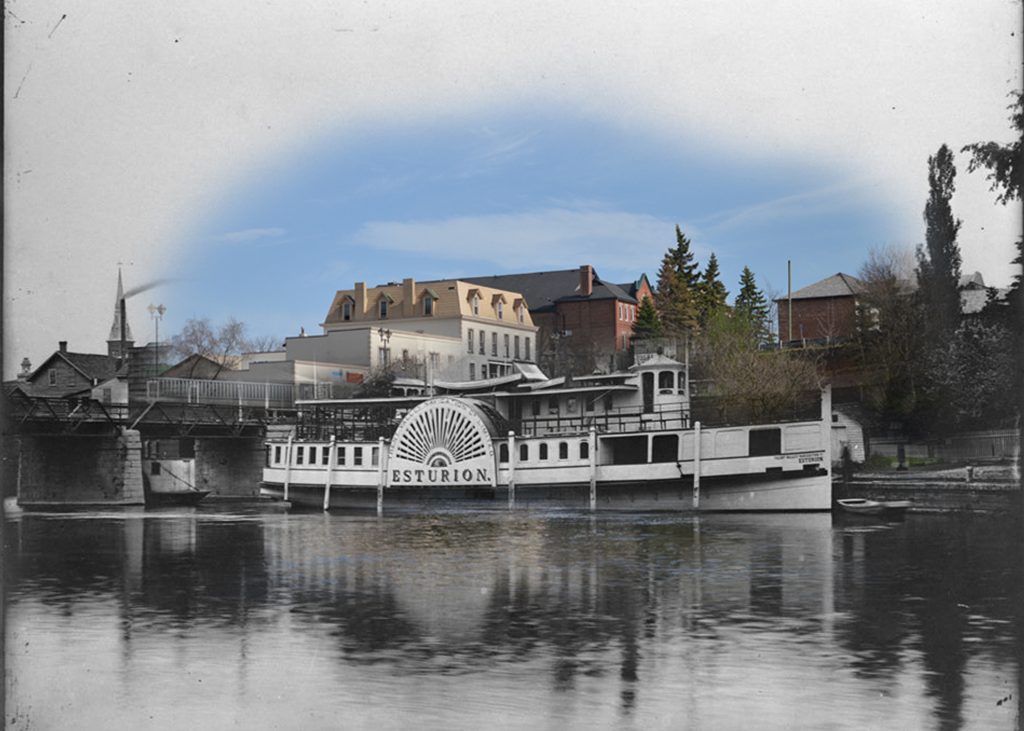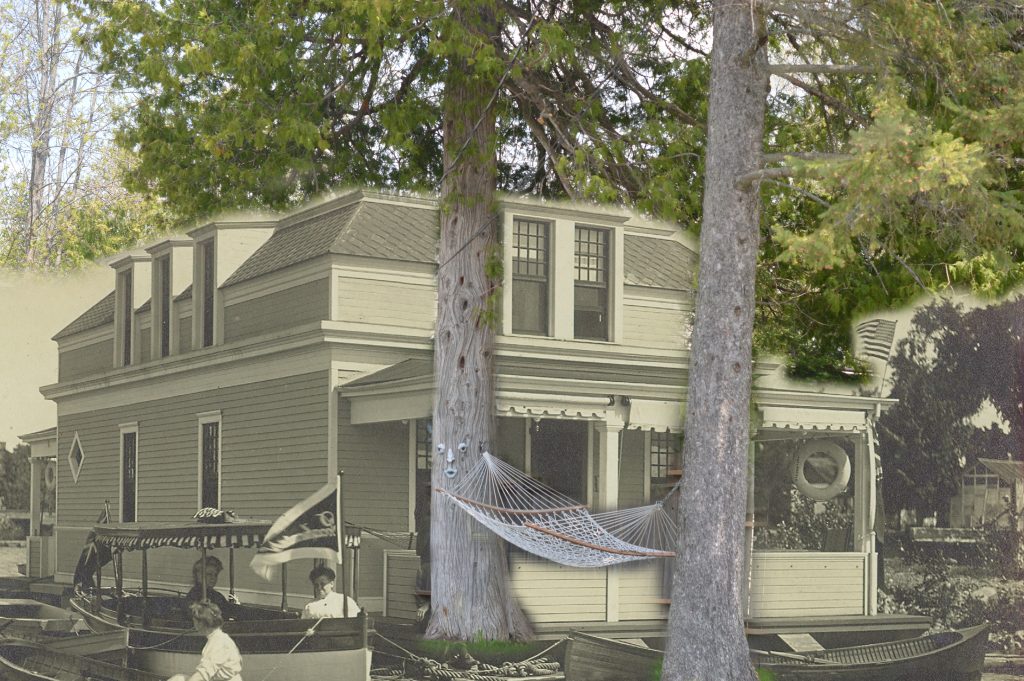Visiting the Land of Shining Waters
When the iron horse arrived in Lindsay in 1857, it made it practical for the surrounding district to become a tourist destination. Visitors from cities across North America could take the train to Lindsay, and before long regular steamboat routes conveyed passengers around the surrounding lakes.
George Crandell’s lines were the first to offer coordinated service and once he had demonstrated the success of the business model, the Boyd lumber family competed with the Trent Valley Navigation Company. The Boyds took a keen interest in marketing the region, and attempting to emulate the success of the Muskokas, travelled to Curve Lake to ask Martha Whetung to give the region a native name, branding it as a natural, pristine, ‘healthful’ destination. She proposed ‘Kawasa’ meaning Shining Waters, soon corrupted into Kawartha–there is no ‘r’ sound in Anishinaabe.

Alexander Orr’s Temperance Inn, now Bobcaygeon Electronics (Original photograph: c. 1885 combined with modern photograph: 2017)
As tourists were streaming to the Kawarthas, businesses emerged catering to them. Fine hotels appeared (the first accommodations were taverns, which as the name suggests were also drinking establishments, and offended the dignity of many genteel visitors). Temperance was a strong grassroots movement, so inns like Alexander Orr’s Temperance House catered specifically to the sober crowd.
At the turn of the century, the first personal steam launches began to appear on the lakes. The passenger carrying lines, represented a pinnacle of Victorian conspicuous consumption–with beautiful woodwork, plush seats and fine dining. The area’s first houseboat appeared at this time as well, owned by the affluent McGill family.
Modern photography and image combining: Sharon Johnson.
Copyright: Maryboro Lodge.




